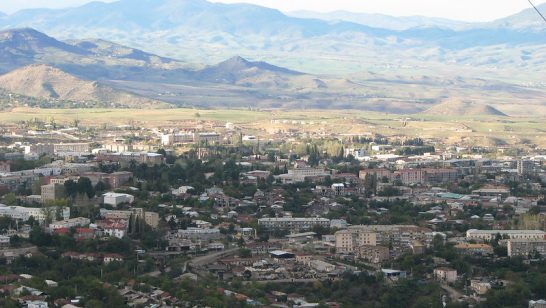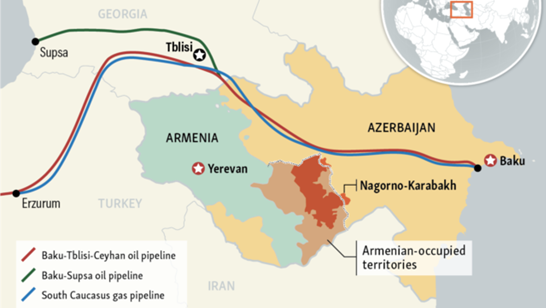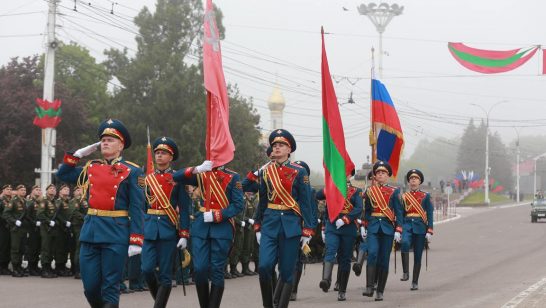
A lasting ceasefire in Ukraine seems to be the best that can be hoped for at the moment. This would not solve the conflict but it would put an end to the fighting and hopefully pave the way for a comprehensive political settlement. Or that is at least the thinking behind the recent ceasefire agreement signed in Minsk. However examples from other separatist conflicts in the former Soviet Union, such as the conflicts over Nagorno Karabakh (Azerbaijan), Abkhazia and South Ossetia (Georgia), demonstrate that ‘freezing’ a violent conflict creates a number of obstacles to peace.
Firstly, a ceasefire can be seen by the separatist leaders as a victory. They may not have achieved their ultimate goal of independence, or indeed of joining another state, but they will see this as winning the first round. The territorial separation has been formalised by an agreement, even if this is only meant to be an interim status before eventual reintegration. This creates a strong incentive against compromise. Indeed, why agree to a political settlement that will grant some level of highly uncertain autonomy when you currently enjoy (de facto) the status that you desired and the accompanying spoils in the form of power and prestige for the local leaders? This also works at the level of the general population: the longer this de facto separation continues, the more likely it is that a new generation will grow up that has no links with the rest of the state and only distant or second-hand memories of peaceful co-existence. We have seen this effect in all the Caucasus conflicts and it constitutes a significant obstacle to reaching a settlement based on re-integration.
Secondly, there is the isolation factor. Recognised states generally reject interaction with unrecognised entities. This rejection is rooted in strong international norms of territorial integrity or driven by fears of legitimising the separatist leaders and their projects. It may also be motivated by a desire to weaken the breakaway regions and thereby, it is hoped, make them more likely to compromise. The problem is that weakness does not necessarily lead to moderation; it can just as well reinforce extreme positions. The risk of a forced, military reintegration is very real for these unrecognised entities, and they know that it would likely only be met with muted international criticism. Combined with isolation, this tends to foster a pronounced siege mentality; a perception that it is necessary to rally around the flag and avoid any display of internal dissent, any wavering when it comes to their maximalist goal. Separatist leaders are, needless to say, often keen to reinforce such perceptions, through propaganda and in some cases through violence, but they do not always have to.
Thirdly, and perhaps most importantly, prolonged separation and isolation only serve to increase the influence of the patron states that these territories rely on for their continued existence. For their military defence and for the supply of even basic public goods, the Ukrainian breakaway territories will likely depend on Russian support – just like Abkhazia and South Ossetia do and just like Nagorno Karabakh depends on Armenia. Such dependence may be rooted in ethnic kinship and a desire to join the patron state, but pragmatism is frequently as important, if not more so: no one else is willing to offer support and without external support, these entities are not sustainable.
The ceasefires signed in the other post-Soviet conflicts were only supposed to be temporary, until a comprehensive settlement could be reached. But they have taken on a much more permanent character and have created unrecognised entities that are completely separate from the state of which they are legally part, heavily dependent on their patrons, dominated by siege mentalities and unlikely to agree to compromises any time soon.
These challenges do not imply that a ceasefire is the wrong strategy – by no means. But it does imply that the resulting interim period must be handled carefully. Even when a ceasefire is upheld, it does not in fact freeze a conflict. The dynamics of the conflict are still changing. It is important to realise this with regards to Ukraine and to avoid the mistakes that were made in other post-Soviet conflicts. Reaching a comprehensive settlement is likely to be a drawn-out process and relations with the contested territories during this period affect the likelihood of ever achieving a peaceful solution.
What is needed is engagement. The Ukraine peace plan refers to the resumption of socio-economic ties. Such ties and other forms of linkages with the breakaway territories are absolutely essential if we are to avoid consolidating the de facto separation of these regions, ease their isolation and try to reduce the influence of Russia. This is by no means an easy strategy to pursue. Its implementation is likely to meet resistance from Kiev, especially if other parts of the agreement are not fulfilled. In the case of Abkhazia and South Ossetia, Georgia has struggled to accept the EU’s strategy of ‘Non-Recognition and Engagement’, while Azerbaijan still blankly refuses any kind of engagement with Nagorno Karabakh. But resistance is also likely to come from the separatists themselves, as pursuing links with Kiev will weaken their claim to separation, and from Russia which will fear its influence reduced. This is why engagement with the breakaway regions and their inhabitants must be regarded as an integral part of the agreement and be assigned priority during the next months.
The opinions articulated above represent the views of the author(s), and do not necessarily reflect the position of the European Leadership Network or any of its members. The ELN’s aim is to encourage debates that will help develop Europe’s capacity to address the pressing foreign, defence, and security challenges of our time.



